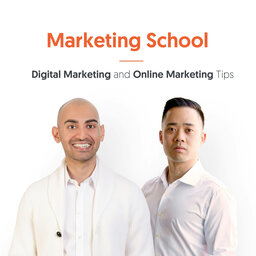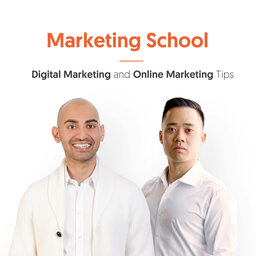Counterintuitive YouTube ads strategy, Google's 7-11-4 rule, Multiplying content using AI, Amazon's excellent operations & more
In episode #2687, Eric Siu, Ralph Burns, Kasim Aslam, and Neil Patel discuss various strategies and insights related to AI in marketing. They share their experiences and highlight what has been working for them in terms of leveraging AI tools and techniques. The guests discuss the power of long-form YouTube ads and the importance of utilizing the high watch times on the platform. They also explore the concept of the Lindy effect and its implications for businesses. Additionally, they delve into the significance of staying on platforms like Instagram and Facebook to drive conversions and engagement. The episode concludes with a discussion on the importance of leadership in building and scaling successful organizations.
Don’t forget to help us grow by subscribing and liking on YouTube!
Check out more of Eric’s content (Leveling UP YT) and Neil’s videos (Neil Patel YT)
Connect with Kasim on Twitter and Connect with Ralph on LinkedIn
TIME-STAMPED SHOW NOTES:
- (00:00) Today’s topic: Counterintuitive YouTube ads strategy, Google's 7-11-4 rule, Multiplying content using AI, Amazon's excellent operations & more
- (00:35) Utilizing long-form YouTube ads with high watch times
- (02:16) Running ads to other YouTube videos for engagement
- (03:14) The 711 four rule for customer engagement
- (03:48) Introduction to Rachel Miller's AI product, Busy AI
- (05:10) Using Opus Pro for creating short-form videos
- (07:30) Using AI-assisted content for blog posts and SEO
- (09:22) Selling on platforms instead of driving traffic to websites
- (10:10) Kasim discusses the benefits of staying in an app for engagement and meaningful data
- (10:57) Ralph shares his experience using video ad sequences on YouTube
- (12:39) Ralph emphasizes the importance of thinking through sequences and understanding that people's actions are chaotic
- (13:54) Eric mentions the challenge of tracking offline purchases influenced by online research
- (15:13) Kasim talks about the Lindy effect, a principle of longevity
- (15:27) Eric recommends the book "Make Your Brand Legendary" for insights on building a legendary brand
- (20:49) Neil shares his insights on hiring amazing talent and the importance of cultural fit
- (21:54) Neil Patel: Leaders should be able to train and bring up lower-performing employees
- (22:36) Neil Patel: Most of the time, you'll have 10% A players in your organization
- (23:36) Find more about Marketing School and Perpetual Traffic hosts online
Go to https://www.marketingschool.io to learn more!
Leave Some Feedback:
- What should we talk about next? Please let us know in the comments below
- Did you enjoy this episode? If so, please leave a short review.
Connect with Us:
- Single Grain << Eric’s ad agency
- NP Digital << Neil’s ad agency
- X @neilpatel
- X @ericosiu
 Marketing School - Digital Marketing and Online Marketing Tips
Marketing School - Digital Marketing and Online Marketing Tips


